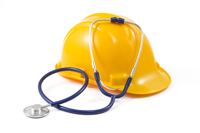By Lance Dobbins
The essential ingredients for success in healthcare construction
Capital spending on healthcare construction continues to rise, and the hospital building boom shows no signs of slowing. Meanwhile, the potential challenges that arise during the lifecycle of a medical construction project are as varied as the projects themselves.
A recent survey found that 60 percent of health system C-suite leaders report an increase in their capital budgets compared to the previous year. About half of respondents indicated they will be investing some of these funds on construction and facility renovations.
As they do so, it’s important to consider how to improve and streamline the design, planning and construction process. Unexpected cost, labor and supply chain issues can cause major headaches for project leads. This includes how to structure and assemble the right project team, how staff will be impacted when juggling daily responsibilities with additional tasks, and equipment planning pitfalls – all of which are obstacles to keeping a project under or within the scope of a budget.
One of the things that we have learned through experience is that many of these challenges arise across the board, regardless of the size of the project. While bigger projects may have a higher level of complexity in terms of volume and diversity of equipment required for the different service lines, the same considerations for planning take place.
Here are a few key considerations and potential solutions to help alleviate these concerns.
Creating the ‘A’ team
 Assembling the right integrated project team can be an early challenge in a medical construction project. All of the necessary stakeholders must be brought together in the beginning stages of the project.
Assembling the right integrated project team can be an early challenge in a medical construction project. All of the necessary stakeholders must be brought together in the beginning stages of the project.
Ideally, key staff and outside experts – including an architect, equipment planner, general contractor, clinical engineering, supply chain, facilities personnel and a project sponsor – should be involved as early as the design phase of the project and continued through its completion. This helps with cohesion and consistency, and to ensure that things don’t get overlooked or missed in the later stages of the project. All project team members need to work together to achieve the common goal of successfully outfitting the new facility or space.
For instance, engaging supply chain personnel at the end of a medical construction project, when the procurement process starts, creates hurdles in terms of fully understanding how and why specific equipment is slated for purchasing. Involving the right folks from the start provides added value when determining why, how and when purchasing decisions are made and if there are adjustments that can create cost savings opportunities.
Being a procurement ‘pro’
The procurement process can be daunting and laborious. The time and energy devoted to this process takes away from someone’s dedicated daily duties and function. Essentially, this person will have to be doing two jobs at once. And for large construction projects, which can last up to three years, this may affect employee morale and burnout.
Streamlined procurement IT platforms can help limit these strains by automating the process, allowing employees to fulfill their daily duties without being overtasked. Look for platforms that have access to tens of thousands of supplies and can do the research and competitive bidding quickly on behalf of the team.
Such information can provide the full perspective on affordable, high-quality capital equipment options while also providing some of the most accurate price benchmarking in the industry, ultimately increasing a facility’s business intelligence and greatly enhancing the decision-making process.
Effective equipment planning
Delayed deliveries, underestimated supply needs and other unexpected equipment issues can delay the construction process and result in missed deadlines, which drive up costs. As a project progresses, leaders often face a change in necessary technology, which can be costly without market intelligence. Bringing in an equipment planner early on during a construction project can often help identify and resolve potential issues before they arise.
Equipment planners can help ensure that operations proceed efficiently and that the healthcare facility avoids costly adjustment through change orders or having to overhaul work that has been already completed because of potential code violations. Working with supply chain professionals, equipment planners can use standardization practices to determine what equipment aligns with a hospital or health system’s preferences, preventing the need to re-evaluate an equipment list when it comes time for purchasing. Equipment planners also keep vendors accountable, leading to improved delivery times. In our eyes, planning is better than reacting.
Healthcare construction is a challenge, but it doesn’t have to be. Investing in solutions that alleviate constraints on human capital, purchasing decisions and operations oversight can help dodge complications in the long-term and keep projects within budget and ahead of time – a prescription for success.
Lance Dobbins is director of equipment planning and business development for capital and construction services at Premier, Inc. Premier’s equipment planning, sourcing and analytics platform leverages proprietary databases with more than 50,000 products and specifications focused on capital equipment needs for existing medical facilities, as well as those under construction.

